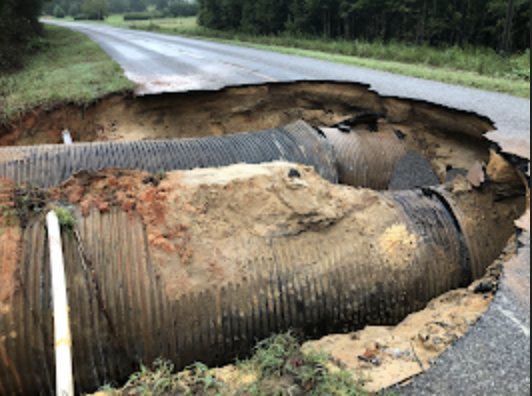Vanishing homes costing co-op
Published 12:00 am Saturday, August 30, 2003
Pioneer Electric has a mystery; mobile homes are vanishing from its service area, and they aren't sure why. But it's costing them a lot of money.
The U.S. Census figures have indicated for a long time that people are leaving our area.
From 2000 to 2001, Butler County's population decreased by 1.2 percent, following a 2.3 percent decrease from 1990 to 2000.
But you don't have to believe some government report, you can just ask Darren Bryan, a Pioneer Electric serviceman. Bryan's job is to connect electric lines to residences when people move into Butler County.
&uot;Over the past several years, when it comes to mobile homes, however, our Pioneer Electric servicemen have taken down more lines and poles than they've put up,&uot; Bryan said.
The practice is costing the cooperative more than $800,000 each year, and the co-op has recently taken action to stop the financial drain on its membership.
&uot;We have seen a high number of mobile homes vanish,&uot; Bryan says. In fact, Pioneer's general manager, Malloy Chandler, said crews connected 394 new mobile homes to the electric system in 2001, only to come to the end of 2002 with the stark realization that 395 trailers had left its system.
In other words, Pioneer Electric actually ended the timeframe with one less mobile home than it started with.
The cooperative electric service provider serves approximately 14,000 members in the rural areas of Butler, Dallas, Lowndes and Wilcox County.
&uot;That trend has been going on for several years,&uot; Chandler said. &uot;What most don't realize, however, is that it costs Pioneer on average $2,000 to build the line to each new mobile home,&uot; he said. In rural areas, most often the site of choice for a trailer is a great distance from any existing power line; the further away it is, the more it costs to construct a line.
&uot;Over the past few years, we've made an $800,000 investment annually in connecting new mobile homes with not a dime more of income to pay the cost of building the new power line because the mobile homes have vanished,&uot; Chandler said.
Who is left to pay? The co-op's other members, of course, are left to pick up the tab; a practice that can't continue because of the effect it would have on the co-op's electric rates, Chandler said.
&uot;We appreciate each of our members, and we've worked to lessen the burden of setting up housekeeping in the country, no matter what type house a member wants to live in. However, the fact remains that mobile homes are just that n mobile,&uot; he said.
In order to keep the vanishing trailers from driving rates up, Pioneer Electric's board of trustees, who are members of the co-op themselves, chose to put more of the burden of running new lines on the homeowners and less on the membership as a whole.
&uot;We still build service to a mobile home that's 75 feet from an existing power line without a construction charge to the member,&uot; Chandler said. &uot;In the past, a member would have to pay, on average, about $250 to have a line built to his mobile home.
Under the board's changed policy, however, that member now pays, on average about $1,000 in construction costs, depending on how far it is from an existing electric line. It isn't cheap, but it's still half of the actual cost of building the service,&uot; Chandler said.
&uot;Our members have made it clear that they are unwilling to continue to pick up the tab for members who leave the system owing money or not paying their way,&uot; Chandler said. &uot;Many of these costs can be avoided. We encourage those who may be thinking about locating on our system to contact us first before choosing a location. We can often save them a lot of time and money by helping them find a spot to locate near an existing power line.&uot;
The Pioneer manager said many times someone locates on the back of the property, requiring several spans of power line to provide service.
&uot;The costs we incur for the first span alone is $2,000, so it's in homeowners' and the co-op's best interest for the home to be located where it can be served with an existing line,&uot; Chandler said.
Line construction charges are but one cost that locating on &uot;the back 40&uot; entails.
&uot;Some years we have spent as much as a $1 million keeping our 2,700 miles of rights-of-way clear. Setting up new services in difficult places adds to that figure, plus landowners often charge for rights-of-way, just another cost a homeowner has to bear,&uot; Chandler said.
&uot;We wish there was some magic way we could make these construction costs go away, but the fact remains that it costs what it costs to provide service,&uot; he said. &uot;When we show the members looking to locate a trailer the actual cost of construction, they can quickly see the challenge we face, and our members as a whole are appreciative when we take measures to keep their costs from rising even more.&uot;


